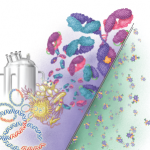CHICAGO – The U.S. Food and Drug Administration (FDA), which can now abbreviate the licensure pathway of biosimilar drugs under a provision of the 2010 Patient Protection and Affordable Care Act, is seeking public comment about approving similar but less expensive versions of biologic therapies whose patents have expired.
In its own discussion of the merits and obstacles to biosimilar drugs, the ACR sponsored a panel session titled, “Biosimilar Products in the U.S. Market: Fact or Fiction?” at the 2011 ACR/ARHP Annual Scientific Meeting here in November. [Editor’s note: This session was recorded and is available via ACR SessionSelect at www.rheumatology.org.]
To date, the FDA has not approved a biosimilar product. Yet session moderator Eric M. Ruderman, MD, professor of medicine at Northwestern University in Chicago, said, “this is an area that has garnered a great deal of interest in the last few years because of the financial aspects; branded biologic products are expensive.”
Also driving interest in biosimilar agents is that patents for several top-selling biologic agents in rheumatology are expected to expire in the next few years, said panelist Vibeke Strand, MD, a consultant to pharmaceutical and biotechnology sponsors for new product development in rheumatic diseases. She also is adjunct clinical professor in the Division of Immunology and Rheumatology at Stanford University in Palo Alto, Calif.
What Is a Biosimilar?
The FDA defines a biosimilar product as a drug that is “highly similar” to or “interchangeable” with an approved biologic medicine. The European Medicines Agency (EMA) considers a medication biosimilar if it is comparable or similar to the reference drug, the original biological, said another speaker, Andrea Laslop, MD, head of the scientific office of the Austrian Agency for Health and Food Safety in Vienna, Austria. In the European Union, 14 biosimilar drugs have been approved since the first one (somatropin) in 2006.
“Biosimilars are not generics,” said Dr. Laslop, a liaison to the EMA. “The whole undertaking is a lot more complicated.”
Unlike generics, most biologicals are complex, large-molecule drugs, said Thomas Felix, MD, scientific affairs director for global development with Amgen in Thousand Oaks, Calif. For instance, a large biological, a monoclonal antibody, measures about 150,000 daltons, has more than 1,000 amino acids and 20,000 atoms, and degrades over time, thus usually requiring special storage to maintain stability, he explains. On the other hand, a small-molecule drug, aspirin, is 180 daltons with 21 atoms, is stable, and has a lower potential for immunogenicity than do monoclonal antibodies.



